Tips for shopping for your first couch
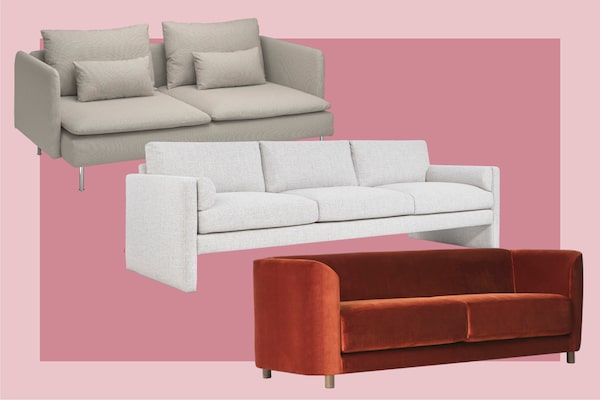
Supplied/Supplied
For tips on buying a new couch, The Globe spoke with interior designer and television host Samantha Pynn. These are her tips.
Sizing: Find the size of couch that will fit through your front door and in your living room, leaving space for tables or other furniture.
Test it out: Pynn says you should test drive a couch the same way you would try on a pair of shoes. While there are online retailers with many options below $900, Pynn suggests checking out a prospective couch in person.
Choose classic style and comfort: “Pick a colour you love, don’t worry about the trends. You can always change things up with pillows and throws,” says Pynn.
Try second-hand: You can find plenty of quality furniture at consignment stores and on Facebook Marketplace for less than $1,000.
How to buy your first area rug
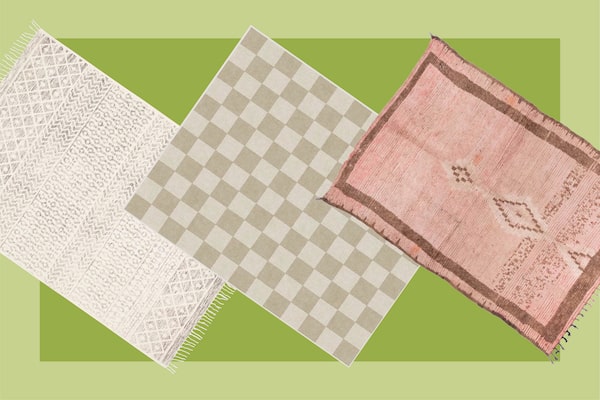
Supplied
For help buying an area rug, The Globe spoke with home-decor expert and YouTuber Alexandra Gater, who does apartment makeovers across Toronto for her channel’s more than 600,000 subscribers.
She understands how a rug can tie a whole room’s colour scheme together, give a drab space some flair, or make a dark space feel more inviting, brighter and airier. She’s also a firm believer that the purchase should last at least five years. These are her tips.
Size it up: Bigger is better, according to Gater.
Longest-lasting material: “My suggestion will always be a 100-per-cent handmade Moroccan wool rug,” says Gater. “They’re durable and can last you up to 20 or more years, and are handmade beautiful decorative pieces that only get better with age.
Best budget material: “Cotton rugs are always my go-to for a cheap and cheerful rug purchase. I love them because they can be thrown in the wash and are considerably less expensive than wool. Often they are reversible, and are soft underfoot.
When to buy synthetic: “Rugs made of polypropylene, nylon or polyester have their time and place. They were a great way to start experimenting to figure out what my style was, and can be a good choice for high-traffic areas like entryways as they can often be cleaned easier and more thoroughly.
Keep it fresh: “I approach home decor as: it’s going to get messy. People who have pets or kids should go with a rug that has a variation of colours and tones which will hide dirt, pet hair, baby spit-up and be easier to clean than a full-on white rug.
How to buy your first media console
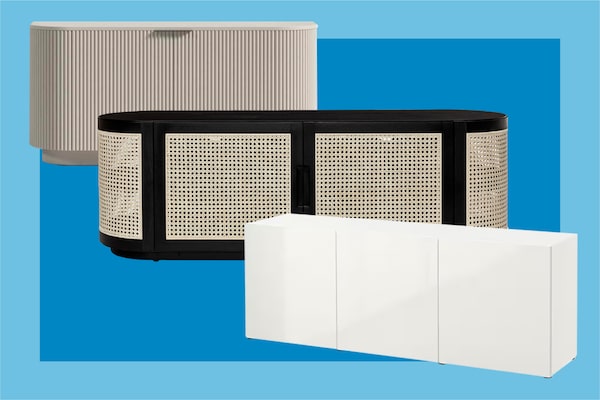
Supplied/Supplied
For help buying a storage solution that lasts, The Globe spoke with Vancouver interior designers Phyllis Lui and Aleem Kassam of Kalu Interiors. These are their tips.
Sizing: If your space is small, you may need to reconsider the size of your TV, as the media console should be bigger or at least the same size as the TV, says Lui. The closer your seating is, the lower it should be. “Ideally it should be at eye level or just slightly higher,” says Lui. “There is an industry rule of thumb to multiply the TV size by 1.2 to figure out how many inches away from the TV you should be sitting. For instance, 55-inch TV x 1.2 = 66 inches away from the TV is optimal.”
Practical design: Soft-close doors are a detail to look for, says Lui, since they are quiet and give a high-end feel. If you’re going to be accessing your equipment often, you might want an open shelf or sliding doors instead of hinge doors, Kassam notes.
Aesthetics: “It will depend on the space. We start by looking at the two main overriding finishes, your flooring and millwork, and trying to match with those tones will look more neutral,” says Kassam.
Modify to save: “Second-hand vintage items can be reinvigorated with painting or overlays, which we use often to style up and bring down prices, while wood pieces can be resanded, varnished and stained.”
Wire management: “Some people like the sound bar but my pet peeve is seeing that wire, so think how that will be handled,” advises Lui.
How to buy your first dining or kitchen table
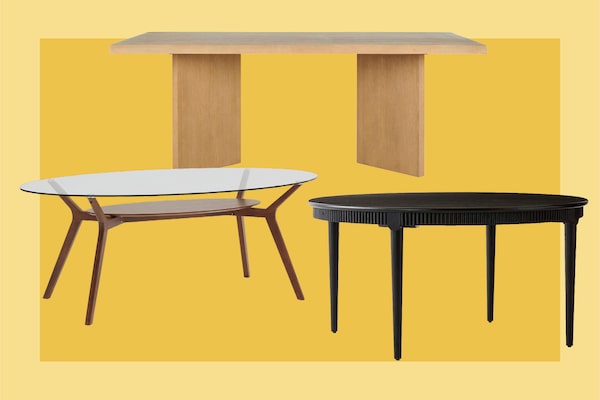
Supplied/Supplied
For help buying a dining table, The Globe spoke with Aly Velji, principal designer at Alykhan Velji, a full-service interior-design firm based in Calgary. Here are his tips.
Sizing: “The last thing you want is for it to be too big,” says Velji. “We often have to tell clients: We’re not magicians, we can’t create more space. It is always good to have a minimum of 30″-36″ from the wall to the table to ensure there is ample room to walk around when chairs are pulled out.”
Small space: “Round tables are great in small spaces, and glass tabletops will not take up a lot of visual room. It could be grey glass, frosted, anything that reflects a lot of light.”
Dining table sets: “I would suggest never to buy matching sets. Although it is easier to do that at big-box stores, it makes a space feel more curated to buy a table and chairs separately.”
Material: “Solid wood tables are the way to go, and find something sturdy. If it's a little shaky or has thinner legs, you should not even consider it as it may not last you even a year.”
How to buy the perfect lighting for your home
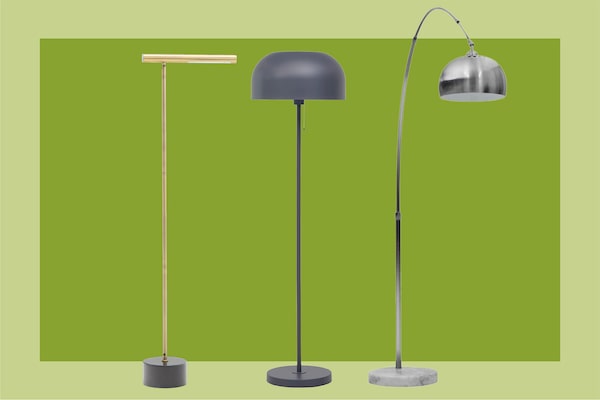
Supplied/Supplied
For help buying lighting, The Globe spoke with Phoenix Grey, a Toronto-based interior designer. Here are his tips.
Three is the magic number: “Having a mix of three different kinds of lighting automatically makes a space feel cozy,” says Grey. “Ambient lighting allows you to create an overall glow, accent lighting enhances more decorative features in the room and task lighting is for reading or focused areas.”
Be intentional with colour temperature: In basic terms, colour temperature, measured in degrees of the Kelvin scale, describes how “warm” or “cool” a light source is. “I personally suggest 2700K, which is any lighting that emulates candlelight with a warm glow in an intimate space, or for ambience in bedrooms and living rooms. I do a cooler 3500-4500K for task areas, an accent light in a reading nook, or your office. I prefer to stick with the same Kelvin rating throughout a room.”
Smart lighting is worth it: With smart lighting, you can program with your phone or set a schedule to dim the light at a certain time, he explains, adding that having an automated system really allows you to benefit from the technology. With smart bulbs, which range between $15 to $35, you can customize the colour temperature. Or, you can go with smart plugs.
A guide to buying a functional, stylish coffee table on a budget
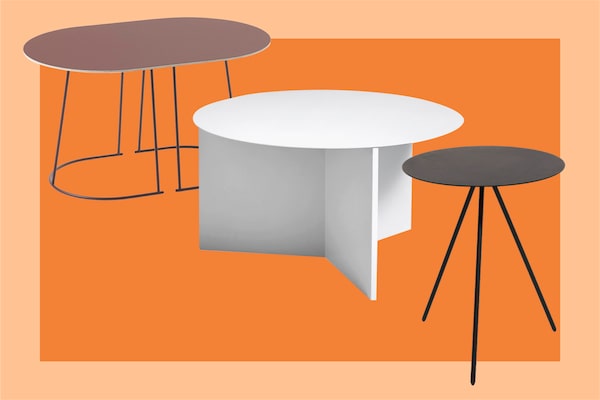
Supplied
For help buying a coffee table, The Globe spoke with Deborah Wang, curator, architect and artistic director of DesignTO. Here are her tips.
Question whether you need a coffee table at all: “Side tables can often be enough,” says Wang, who herself has five light and movable side tables, and no big coffee table. Consider whether flexibility is important to you, and if you need something that can be multi-use.
When choosing the material, think about how you live: “A lot of people misgauge how they treat furniture. Be honest with yourself about whether you can take care of a wood table and use a coaster every time.”
For small spaces: “Round is a personal favourite of mine. They take up less surface area, appear less dominant and have no sharp corners to bump into.”
Sizing: “Leave 18-20 inches between the sofa and table, so you can walk around it, stretch out your legs. Its height should be the same as your seat of your couch or lower, while sometimes side tables can be higher, 17-18 inches high.”
A guide to curtains and blinds on a budget
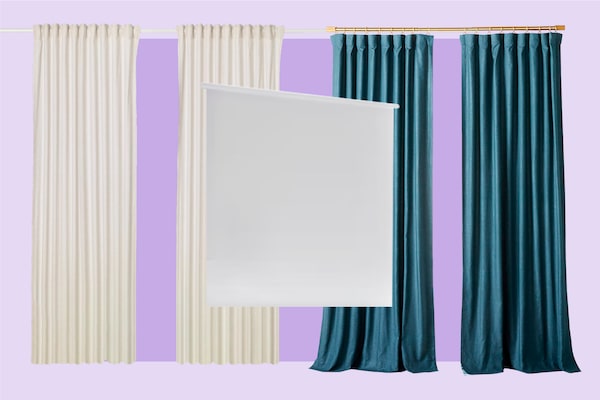
Supplied
For help buying curtains and blinds, The Globe spoke with Nicole Babb, designer and co-host of HGTV Canada’s Styled. Here are her tips.
For the living room: Babb suggests a breezy weaved linen, cotton or viscose silk curtains, which work especially well in a condo. “As apartments are shrinking in size, you want to find something airy to make the space feel bigger.”
For the bedroom: Since light pollution affects sleep quality, blackout curtains are a popular choice. Babb goes with blackout blinds or drapes to shield the morning sun. She also loves velvet curtains for warmth, durability and privacy in bedrooms.
Before buying, feel it in-person: It should feel soft, not rough, which is a telltale sign it’s made from synthetics such as polyester, says Babb, also noting buyers should pay attention to whether the colour will easily turn grey and dingy.
A hack for oddly-shaped windows: For strangely-shaped arches or very narrow windows, custom blinds are the ideal solution, but they are expensive. An alternative is covering the glass with a privacy screen, Babb says. “All you need is water, an X-acto knife and a squeegee to apply” she says.
Layer it: By putting sheer curtains on a separate track as a first layer against the window, and the drapes on top, you can get a luxurious hotel feel that allows you to adjust the amount of sunlight in the room.



